Real eState
In Haifa, Israel sells Palestinian homes as luxury real estate
|
|
Haifa, Israel – The city of Haifa sits like a cascading waterfall on the lush green slopes of the Carmel Mountains on the strikingly blue Mediterranean Sea.
It is often portrayed by Israeli officials as well as Western and Israeli media as being a hip, modern city and a model of “coexistence” between Israelis and Palestinians.
But beyond the skyscrapers and rows of cement buildings in Haifa, a small number of pre-1948 Palestinian sandstone homes tell a different story.
Haifa came under the control of Zionist militias in April 1948, three weeks before Israel signed its declaration of independence on May 14, hours before the end of the British Mandate in Palestine at midnight on May 15. The latter date is commemorated annually by Palestinians as the Nakba, or “catastrophe”, marking the violent ethnic cleansing of their country.
By then, Zionist forces had expelled more than 95 percent of Haifa’s residents. Out of an original 75,000 Palestinians in the city, only 3,000 to 4,000 remained. The rest became refugees, mainly in neighbouring Lebanon and Syria, and they are barred from returning to this day.
During the Nakba and the decades that followed, Zionist and Israeli forces flattened the majority of Palestinian neighbourhoods and buildings in Haifa.
Almost all of the historic centre of the town was destroyed. Today, it is a modern square of Israeli governmental and commercial buildings and a large parking lot.
For example, a 29-storey building housing government offices was constructed in 1999 on the ruins of Seraya City Hall, which was built in the middle of the 18th century and demolished in 1949.
“They built governmental buildings on the ruins of the Arab-Palestinian buildings – the buildings that were demolished and erased during the Nakba,” said Orwa Sweitat, a Haifa-based urban planner and activist who works to prevent further demolitions.
“Today, there is no trace of this big crime,” he told Al Jazeera.


’11 buildings for $20m’
According to Haifa-based historian Johnny Mansour, “Only 20 percent of Haifa’s original homes remain.”
Ownership of the Palestinian buildings that survived the Nakba was transferred to the state under the Israeli Absentees’ Property Law.
This was not unique to Haifa. All Palestinian properties whose owners became refugees, including those who were internally displaced, were taken over by the state.
“In historic cities such as Haifa, Jaffa and Akka, some 70,000 historic buildings were confiscated immediately after 1948,” Sweitat said.
Of those buildings taken in 1948, only 4,800 remain today, he said.
“These are all in the hands of the state. The rest was either demolished or sold to private real estate companies,” he explained. “In Jaffa, only some 1,200 buildings remain, 600 in Haifa, 600 in Akka and some 350 in Nazareth.”
Israelis now live in some of the Palestinian buildings in Haifa while others have been turned into Israeli art galleries and hipster bars. Some house Palestinians.
Since 2000, the Israeli government has been selling the remaining Palestinian buildings to public and private real estate companies, which will either demolish them and build modern residential or commercial projects in their place or renovate and sell them as luxury real estate directed towards the Israeli market.
“They are transforming the ruins of the Nabka into economic jewels for the benefit of the Israeli market,” said Sweitat, explaining that the “process of gentrification aims to attract middle- and high-class Jews and push out Palestinian Arabs”.
“Both Israeli laws and city planning worked together to seize the property and lands of Palestinian refugees” and to “erase, destroy, deform and privatize the Arab-Palestinian identity and characteristics of Haifa”, he said.
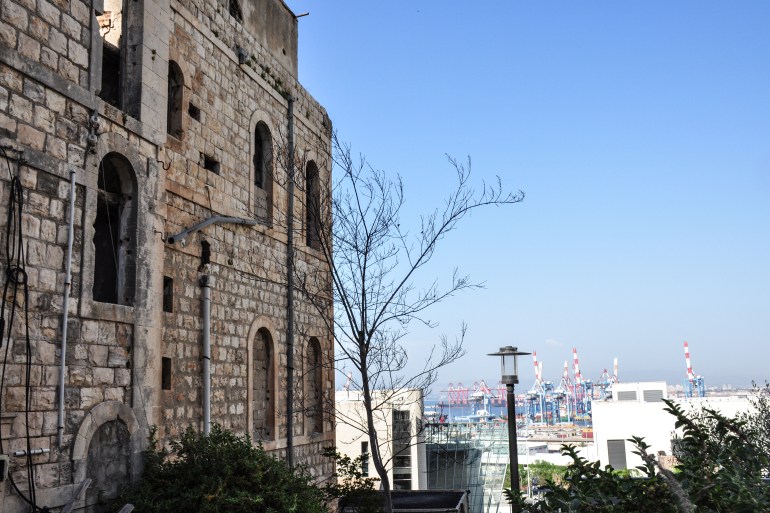

Nowhere is the story of the dispossession and erasure more evident than in Wadi Salib, a formerly thriving Palestinian neighbourhood where it is as though time has stood still since the Nakba.
The stone homes stand as silent survivors, looking out onto the Mediterranean Sea about 1km (0.6 miles) away.
Most of the neighbourhood was demolished. In 1949, Israel settled Jews from North African countries in the remaining Palestinian homes and buildings. They lived there for 10 years before protests broke out against difficult living conditions and racism, and the community was resettled elsewhere.
Since then, most of the Palestinian buildings have been sealed off with concrete blocks or covered with metal sheets.
In the past two decades, all that remains of Wadi Salib was sold by the Israeli government to private and public real estate companies.
“They conduct very big bids that only large companies can enter into and Palestinians can’t afford,” Sweitat said. “Ten years ago, for example, 11 historic buildings were sold for $1m. Today, they want to sell the 11 buildings for $20m.”
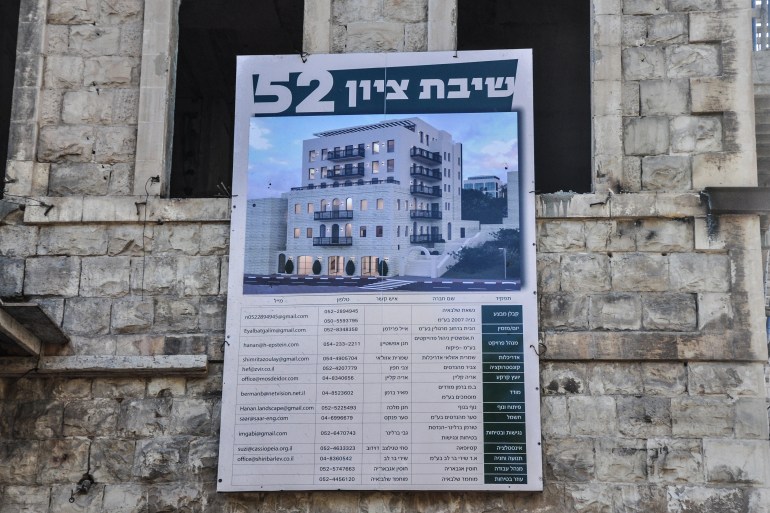

‘How did this happen to us?’
Abed Abdi is an 81-year-old Palestinian man who was expelled from Wadi Salib and Palestine as a whole along with his mother and his four siblings in 1948.
His father managed to remain in Haifa, and after three years in refugee camps across Lebanon and Syria, Abdi, his mother and three of his siblings became one of the few Palestinians allowed to return to their city for family unification.
Abdi’s eldest sister, Lutfiyeh, however, was not able to return and remained at the Yarmouk refugee camp in Syria until her death three years ago.
“We tasted dispossession and estrangement in Lebanon and in Syria,” Abdi, a visual artist, told Al Jazeera from his studio in Haifa. “Our family was separated like many Palestinian families from Haifa at the time.”
From 1947 to 1949, Zionist forces expelled at least 75 percent of the Palestinian population, destroyed 530 Palestinian villages, ethnically cleansed major cities and killed about 15,000 Palestinians in a series of mass atrocities, including dozens of massacres.
Today, Palestinian refugees represent the longest unresolved refugee problem in the world. About six million registered refugees live in at least 58 camps located throughout Palestine and neighbouring countries.


The first refugee camp Abdi and his family arrived at was the Mieh Mieh camp in Lebanon, Abdi said as he was surrounded by dozens of his paintings, many depicting the Nakba and Arab neighbourhoods in Haifa based on his childhood memories.
“I remember that the separators between the families were made out of sackcloth. When I touch and smell this fabric now, it takes me back to my childhood, and this memory has stayed with me all my life,” said Abdi, who has incorporated sackcloth into his art pieces.
“I also remember how my mother would make shoes for us out of leather bags,” he said.
The several thousand Palestinians who remained in Haifa after the Nakba, including Abdi’s father, were rounded up and forced to live in the Wadi Nisnas neighbourhood. They were not allowed to reclaim their properties in other parts of the city, which came under Israeli military rule and constant curfew.


Abdi’s father moved into his aunt’s house in Wadi Nisnas, a couple of kilometres away from their destroyed home in Wadi Salib. He shared the four-bedroom house with a displaced Palestinian family, also from Haifa.
When the rest of the Abdi family returned in 1951, the six of them lived in one bedroom for 10 years before managing to move out.
Despite the passing of more than seven decades, Abdi said the loss and displacement of the Nakba are still too much to bear.
“I used to return to Wadi Salib a lot,” Abdi said. “The area is not far from me. I would remember my childhood and my tragedy.”
“When I see it, I always get a feeling of not only sorrow, but the recurring question of ‘how? How did this happen to us? These empty and destroyed buildings, where are their owners? How is it that we were expelled?’”




Real eState
This Toronto home is a ’90s decor trip but a steal at only $600K
|
|
If you’re a millennial and grew up in the ’90s, you’ll probably remember a fair amount of ’90s home decor trends that might still haunt you to this day.
There were sponge-painted walls, all-beige everything, wallpaper borders, oak cabinets, carpets in places where there shouldn’t be carpets, bedroom sets from big-box stores, Southwestern or Tuscan decor in homes that weren’t in Arizona or Italy, and the list goes on.
We thought we’d left those troubling times in the past, but 39 Hatherley Rd. really brings back all those memories.
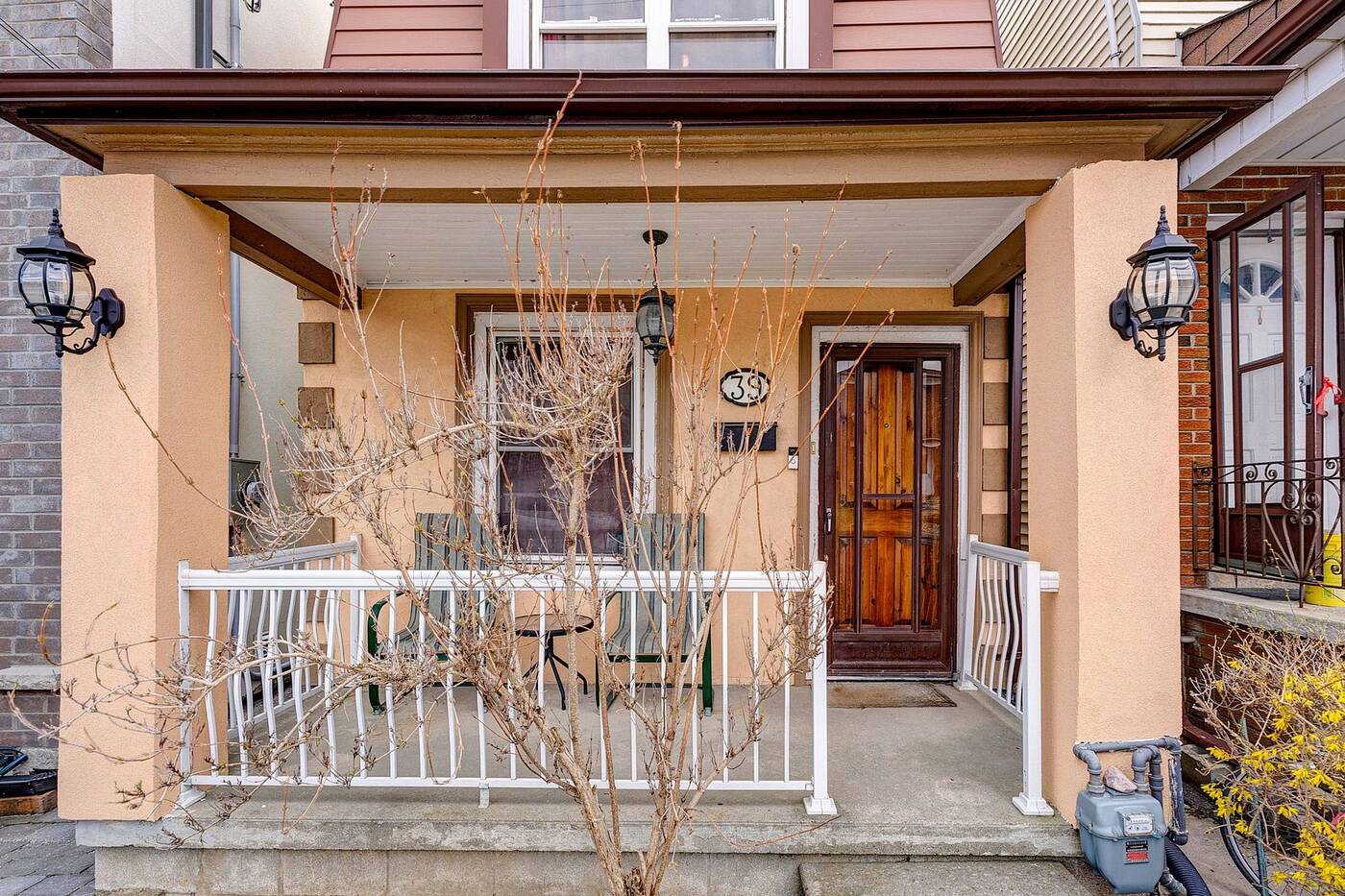

The front porch.
Somehow this two-bedroom, one-bathroom house hit almost every ’90s trend, except for carpets in the bathroom (phew!).
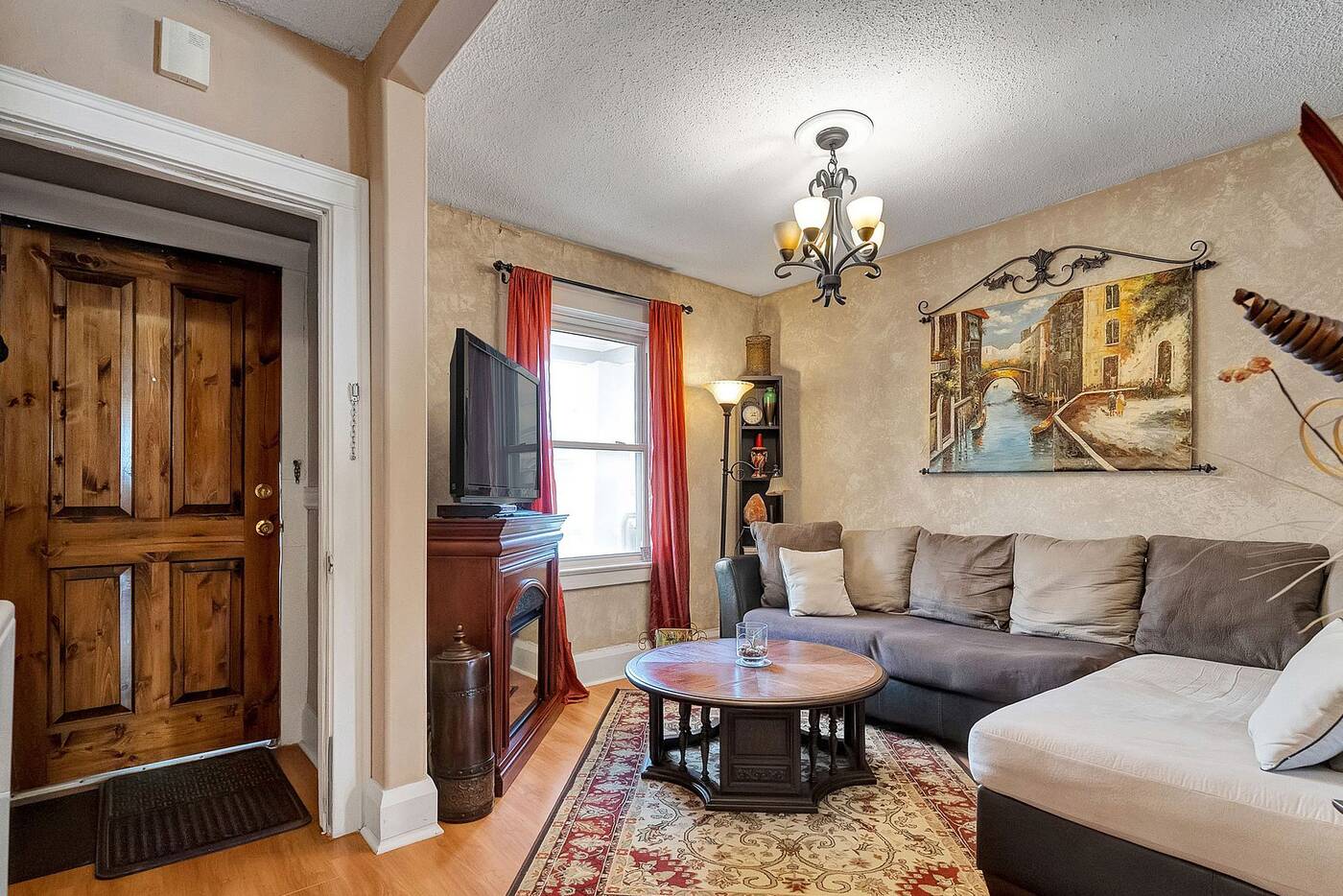

The entryway.
What’s weird is this house has changed ownership a few times since the 90s. In fact, it was most recently purchased in 2010 for $250,000.
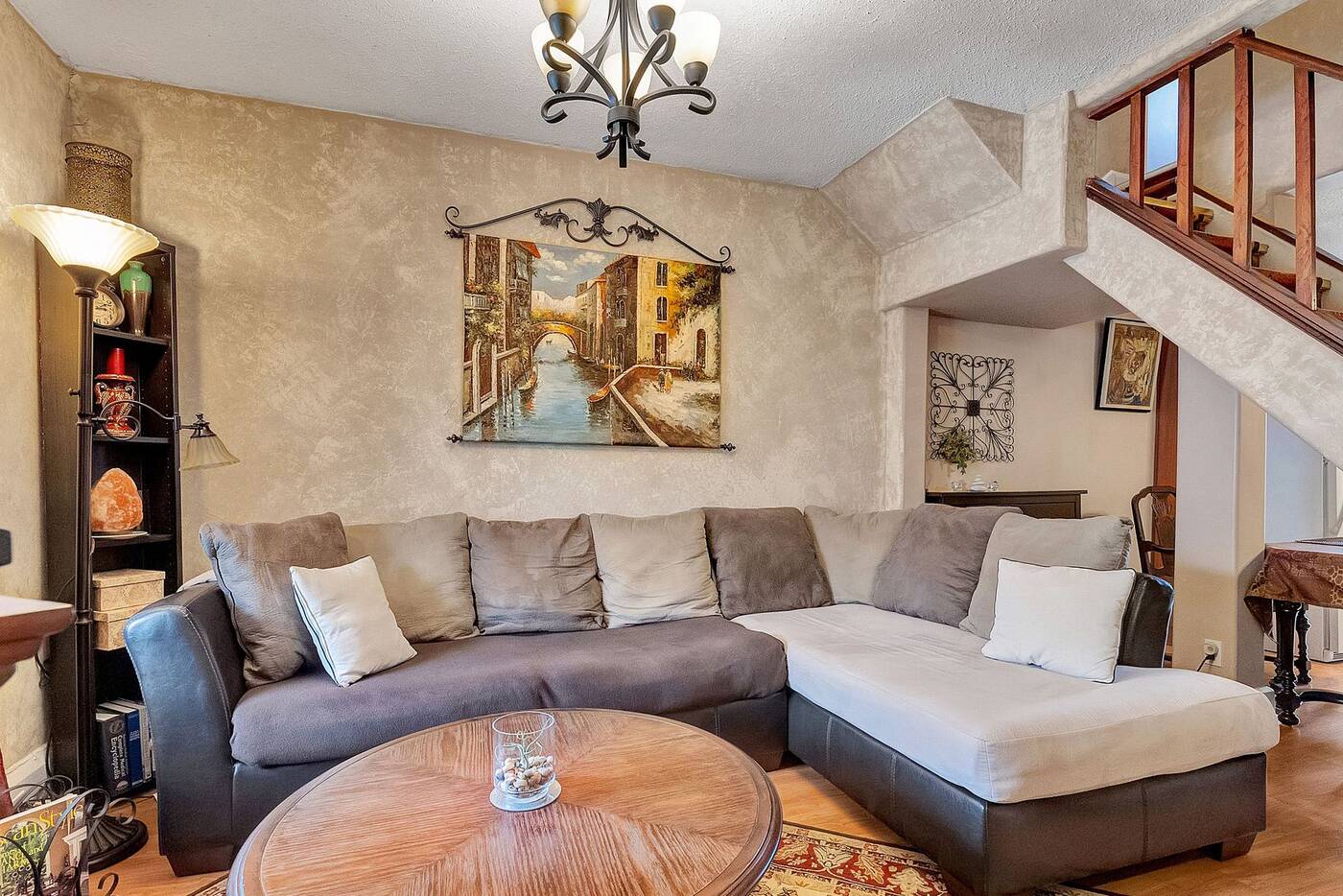

The living room.
So it’s somewhat surprising that when you look at past listing photos, almost nothing has changed. In fact, it seems they added the sponge-painted walls in 2010.
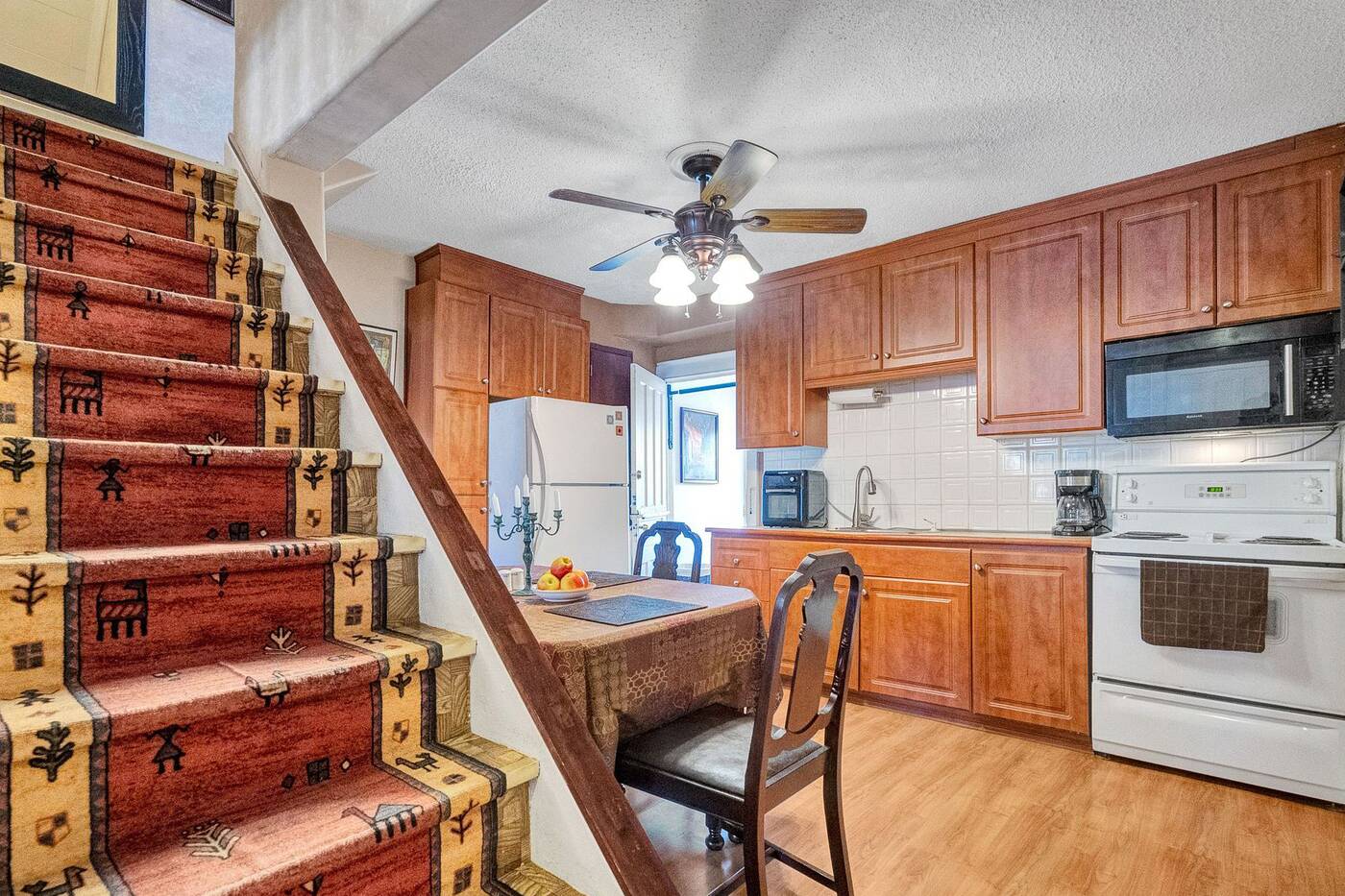

The kitchen.
But despite 39 Hartherley Rd. being a total throwback, this house is, as the listing says, “a diamond in the rough.”
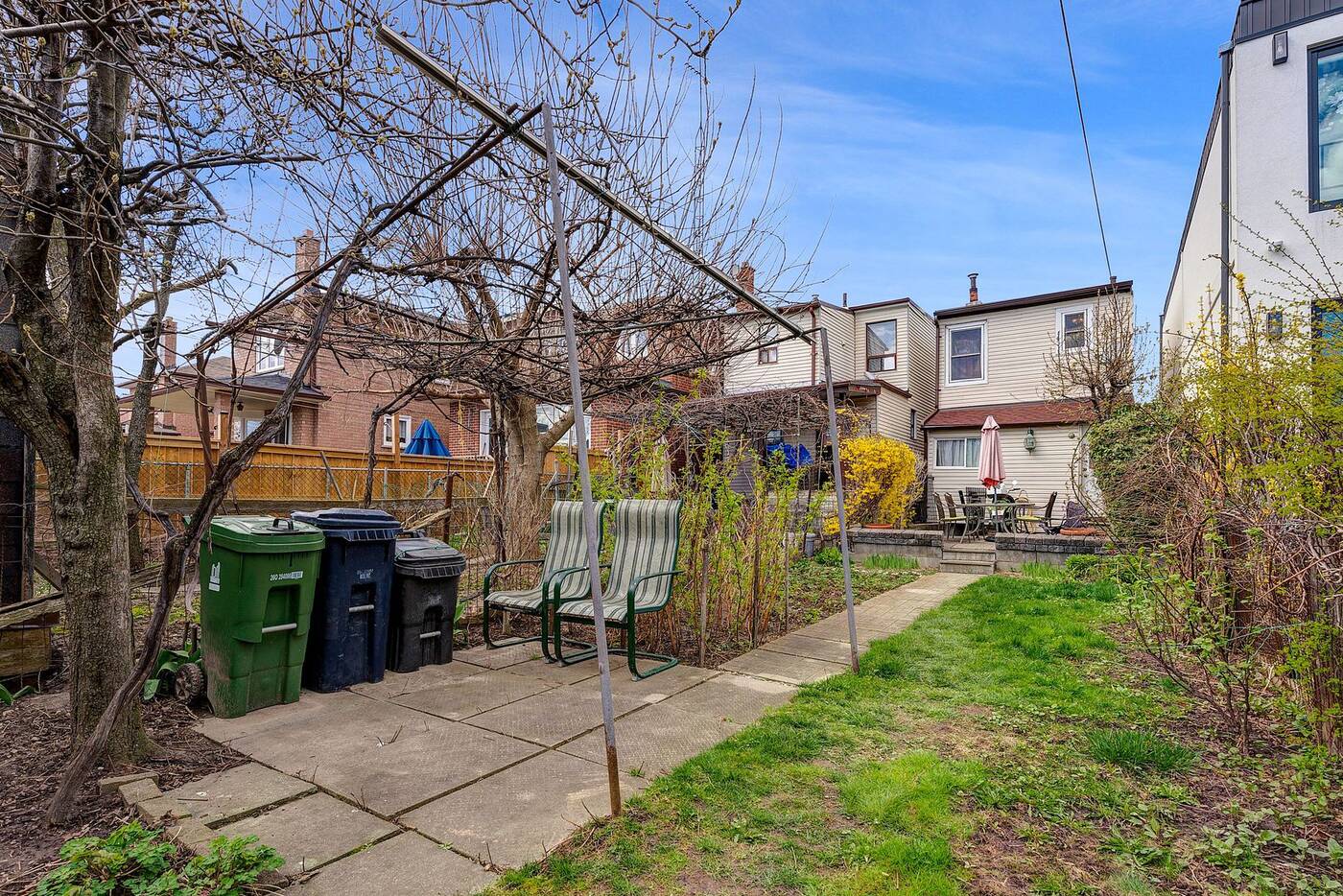

The backyard.
First off, it’s a detached house with a 125-foot deep lot in a good location.
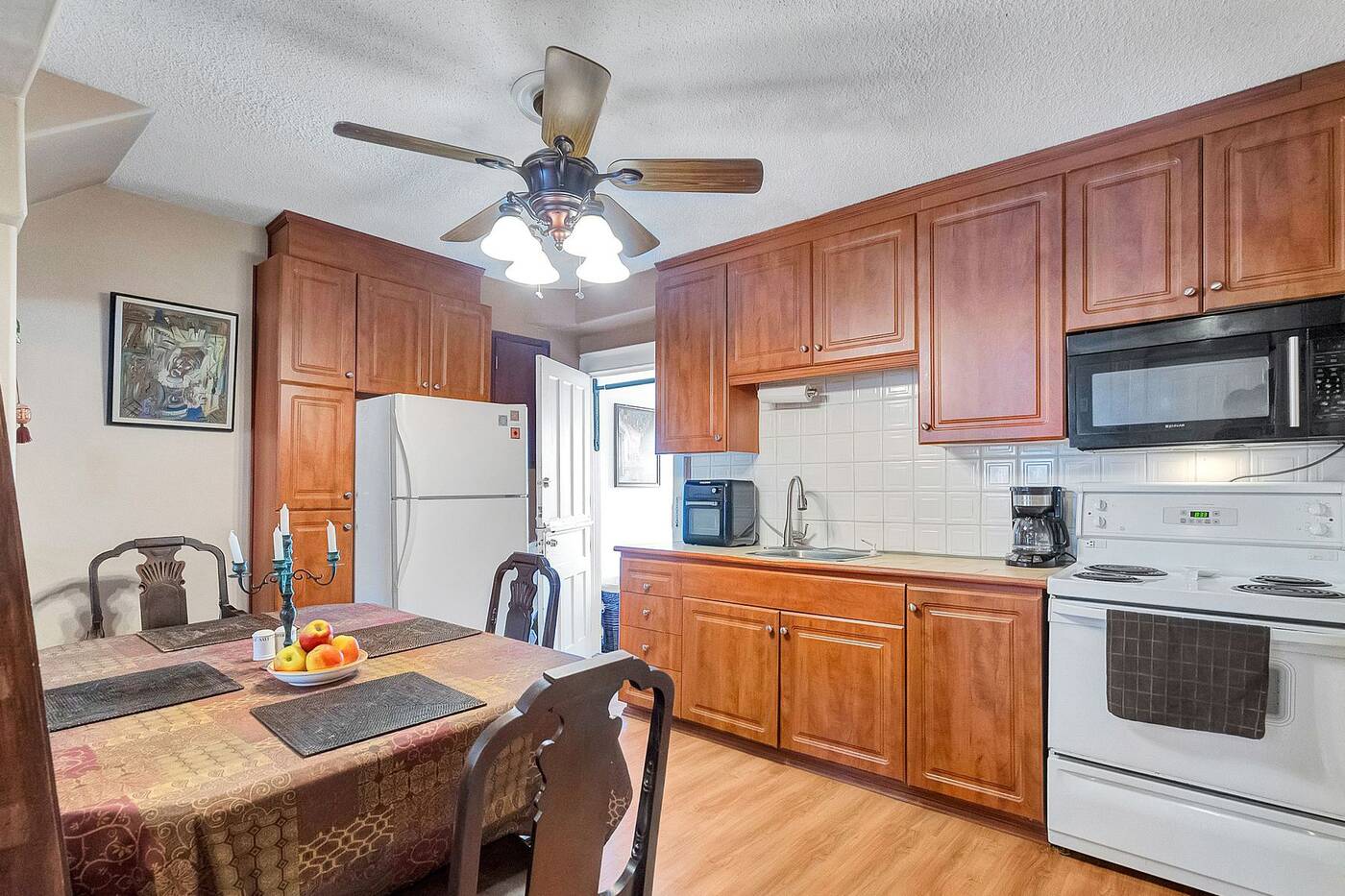

The kitchen has plenty of storage but, sadly, no dishwasher.
The main floor has a living room and kitchen with enough space for a dining table.
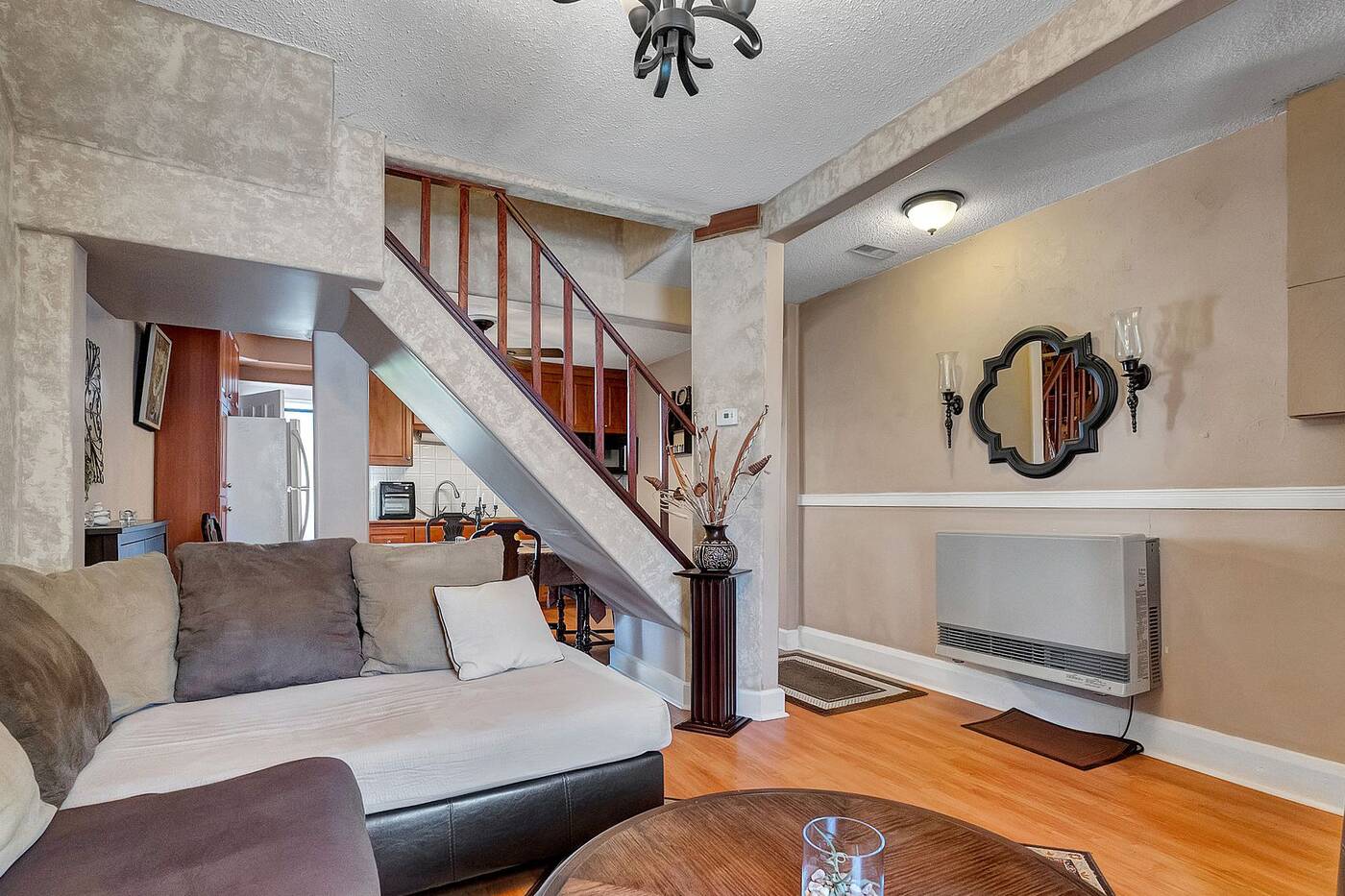

The main floor.
The layout is a bit awkward but the Dutch door off the kitchen is too cute.
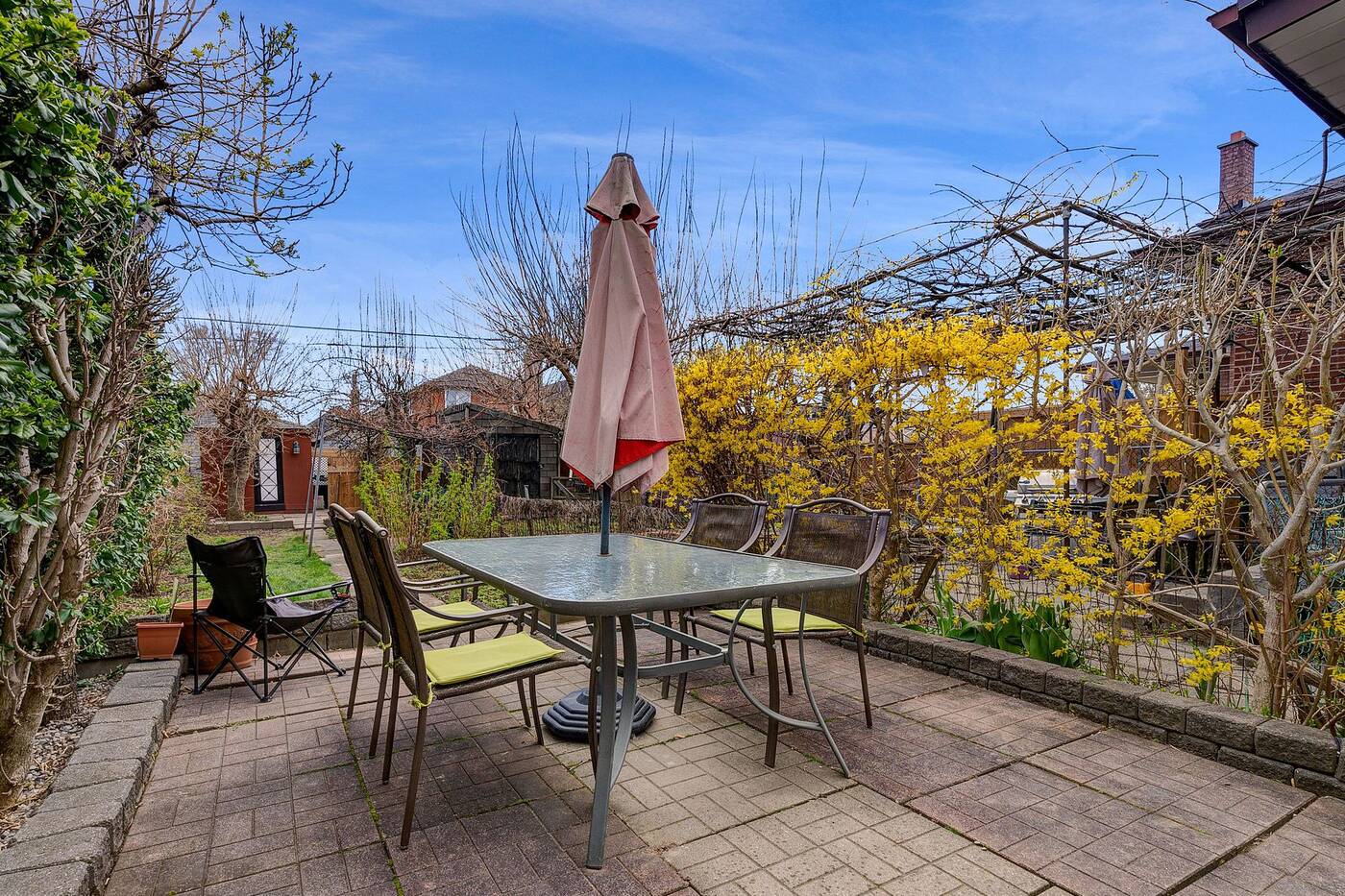

The back patio.
Off the kitchen is a laundry room/mud room that leads to the spacious backyard.
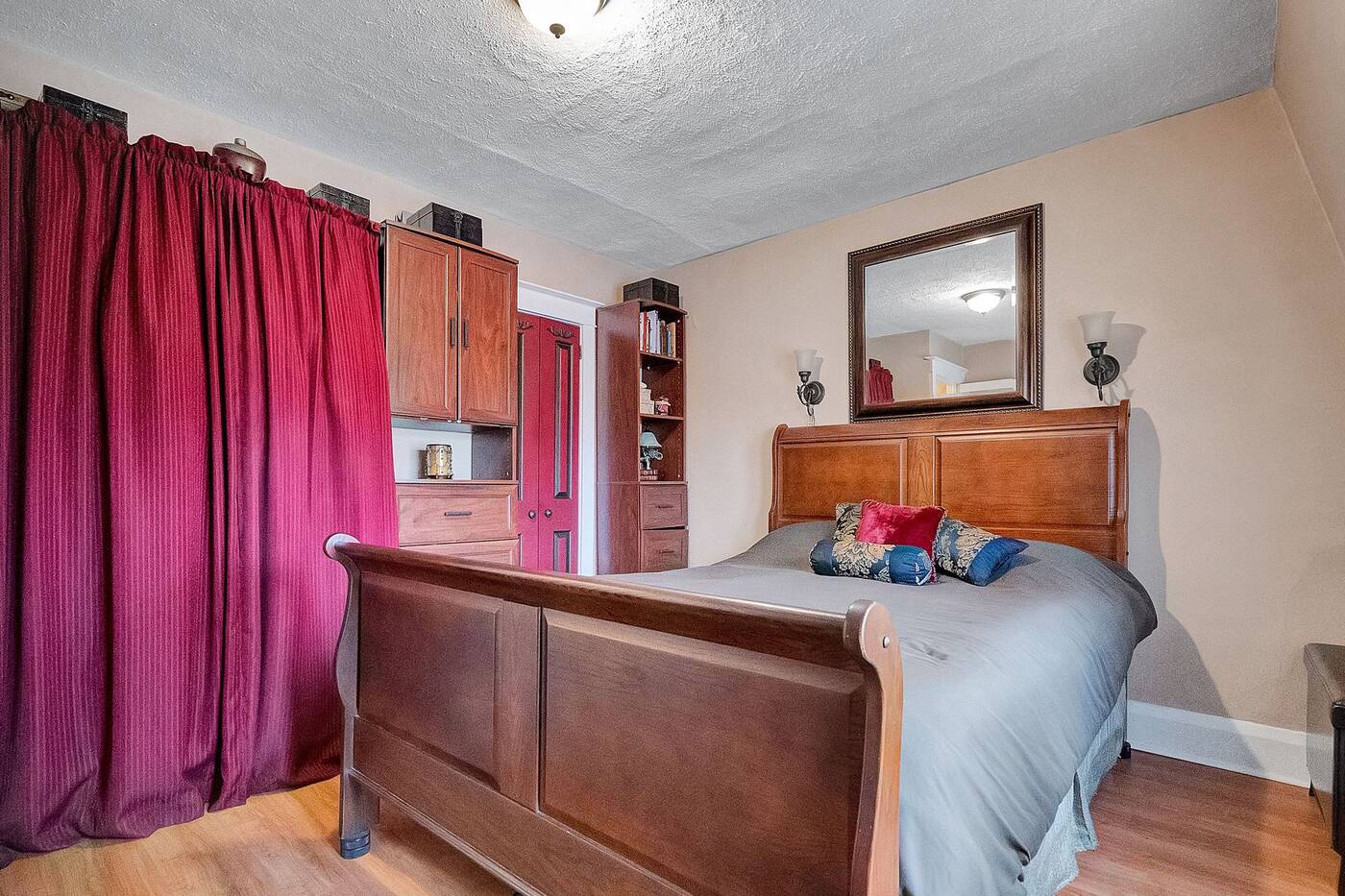

The primary bedroom.
Upstairs, there are two decently sized rooms and a small bathroom.
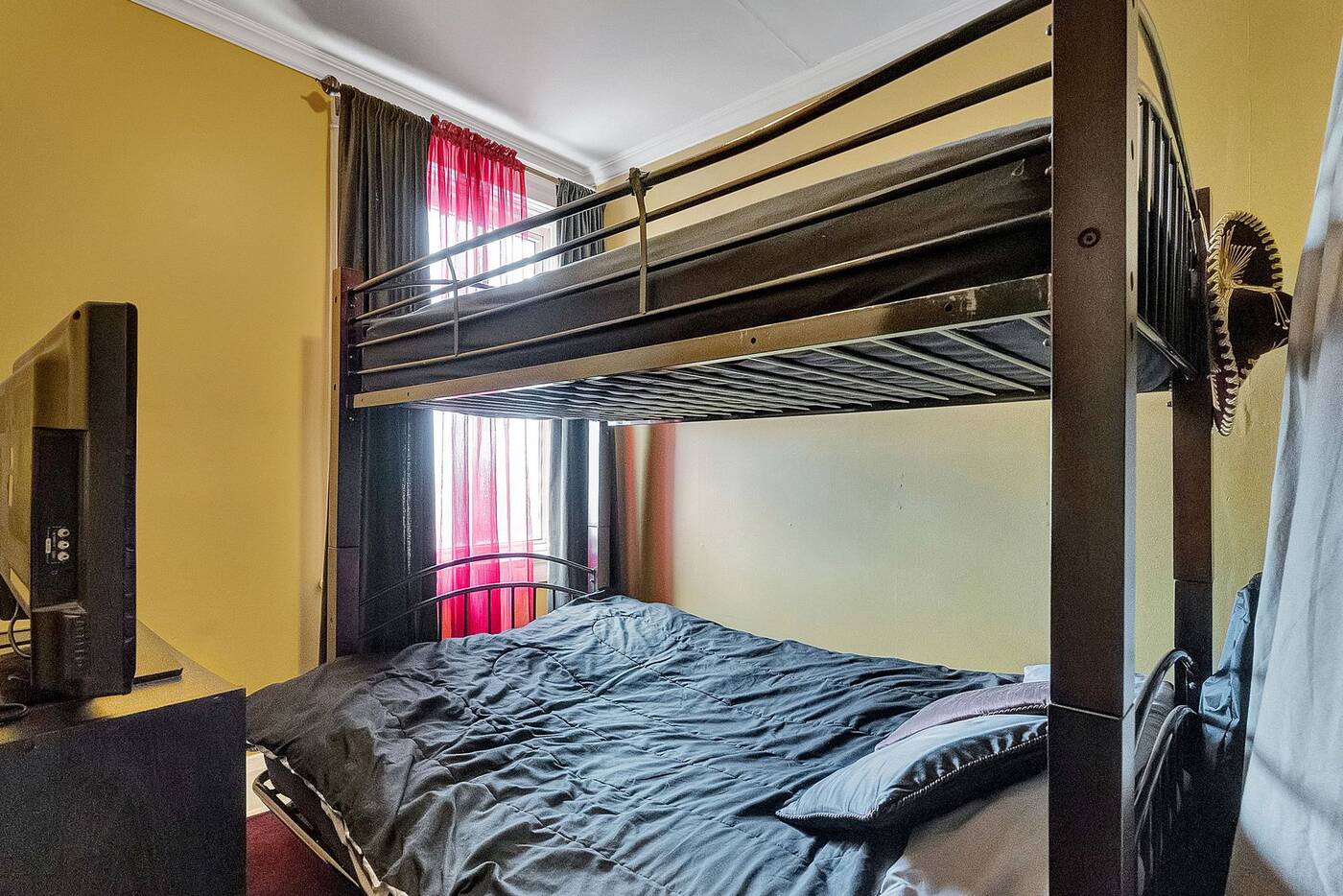

The second bedroom.
The house definitely needs some updating but the roof was done in 2015, the furnace is only a few years old, the electrical has been updated, and there’s room for expansion.
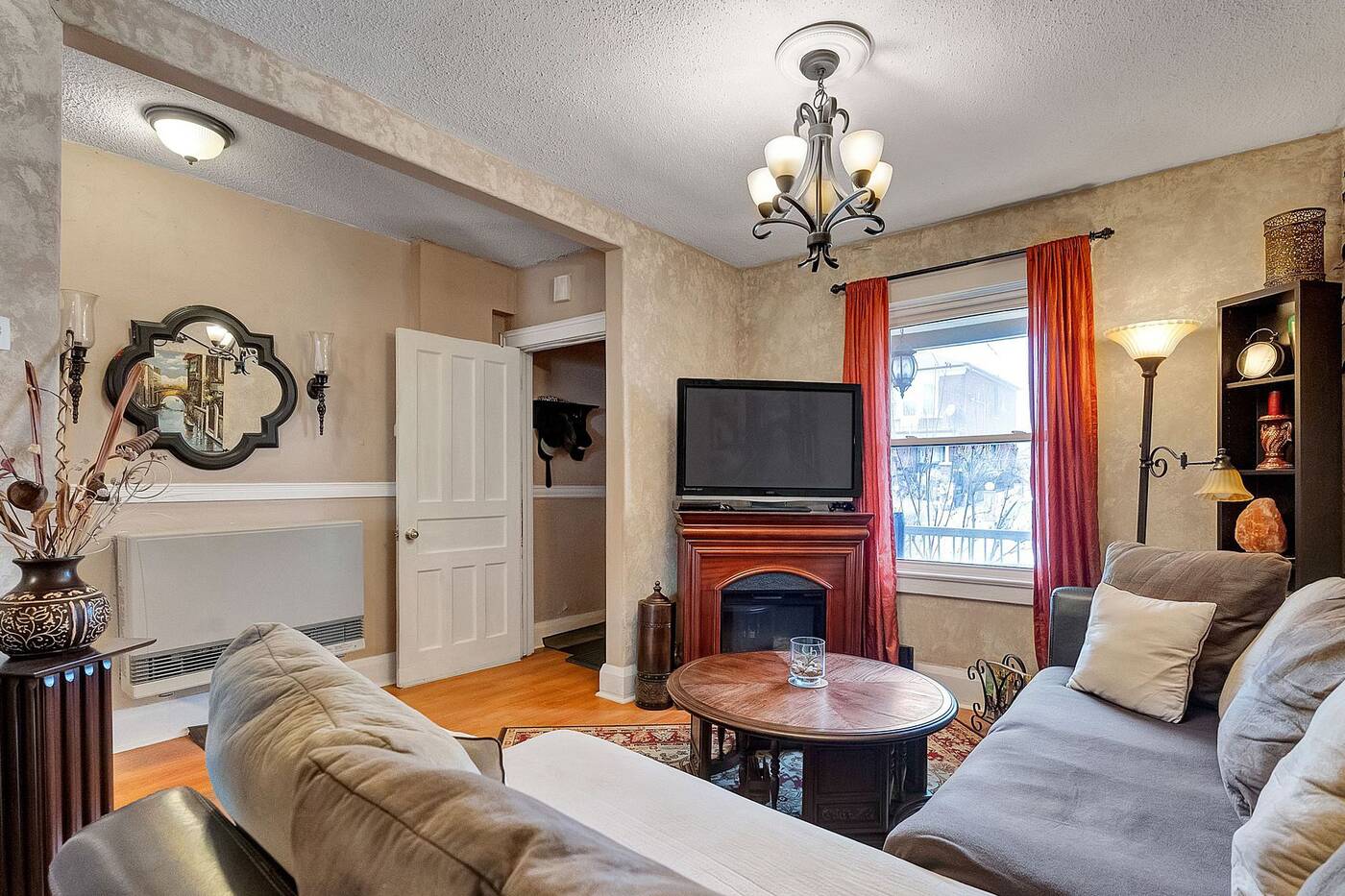

A fireplace in the living room.
Also, a coat of paint will do wonders to brighten up the all-beige ’90s aesthetic.
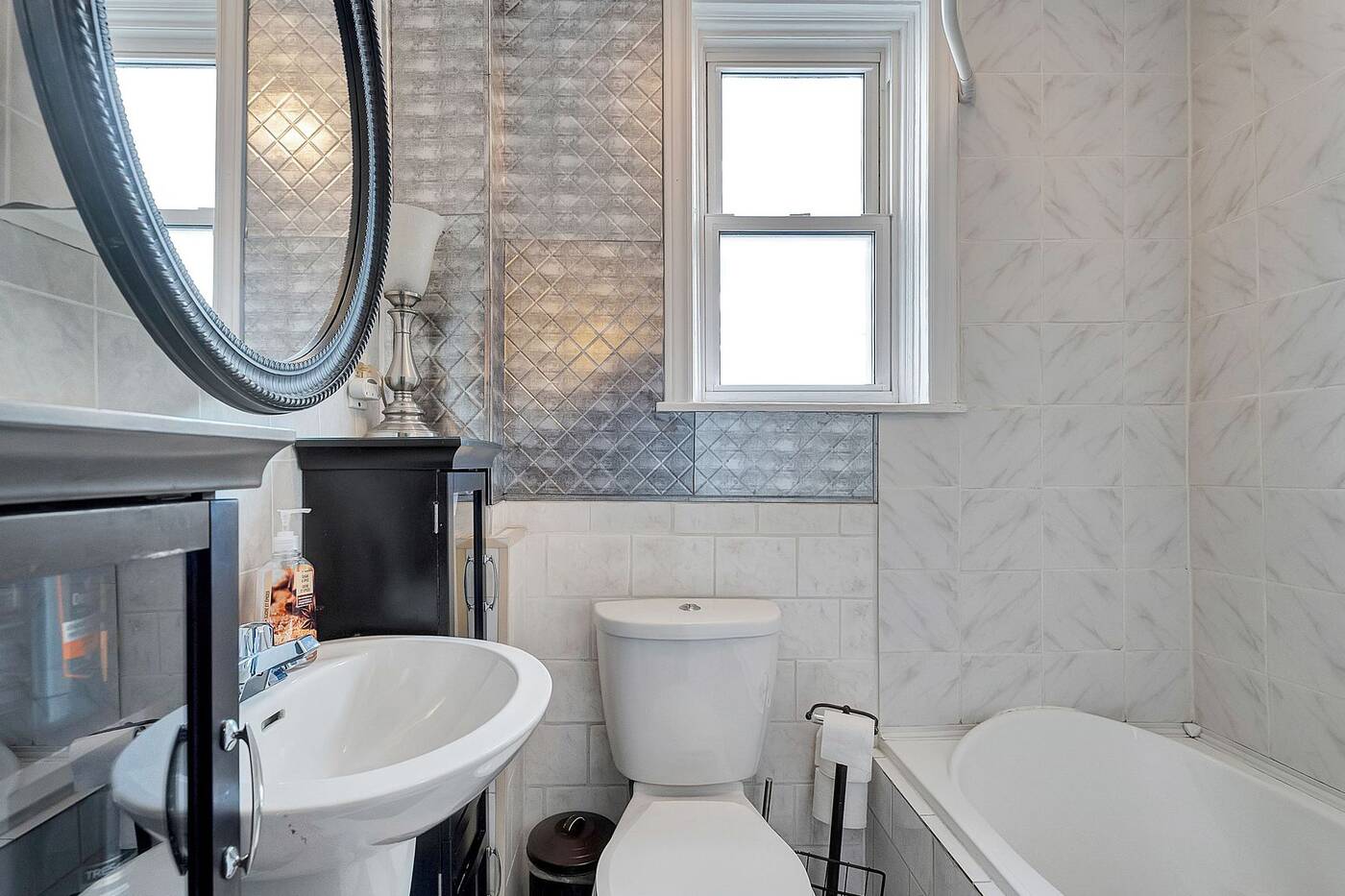

The small bathroom.
However, the biggest selling point of this home is the price point.
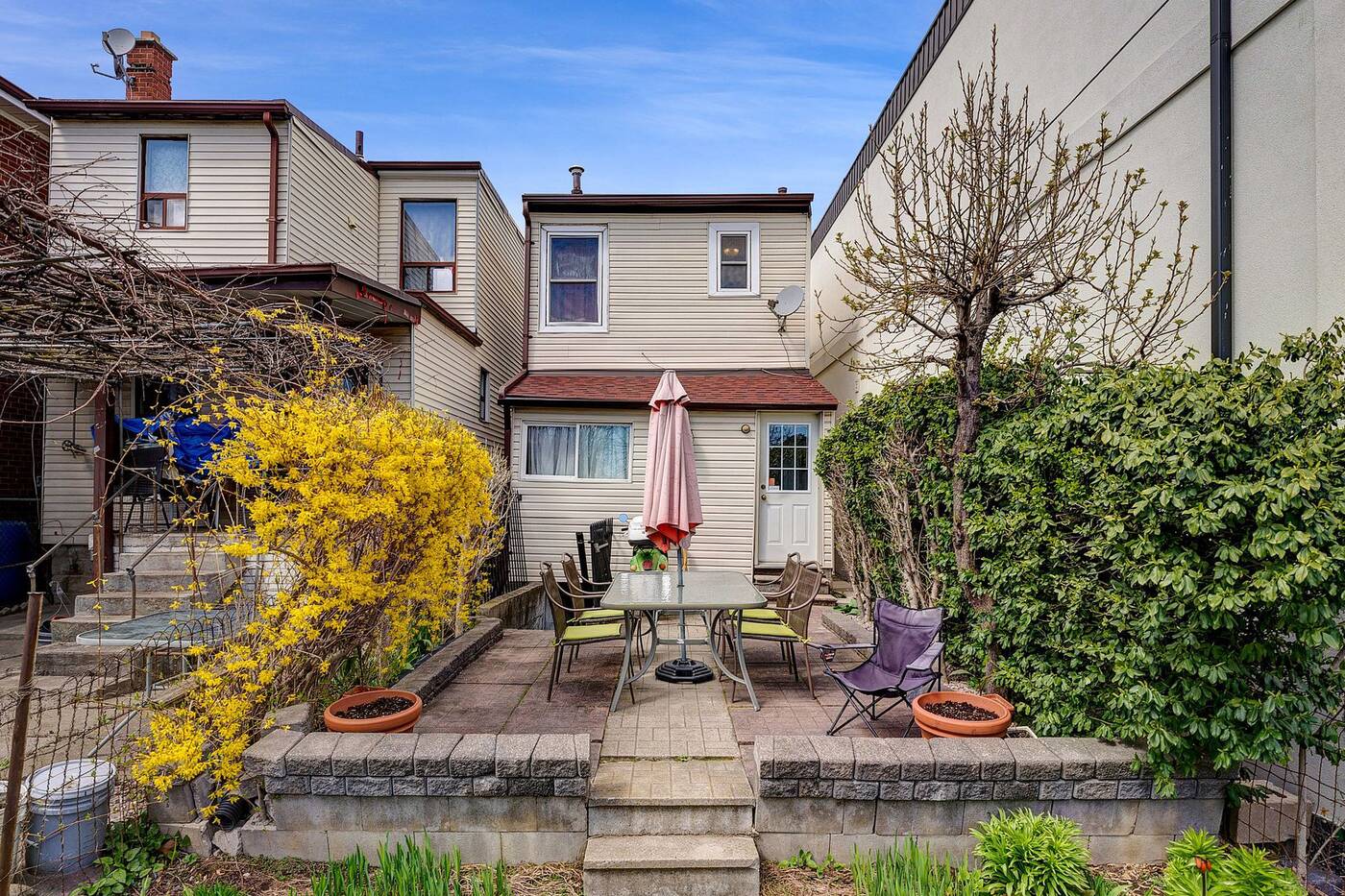

The back of the house.
39 Hatherley Rd. is listed for only $599,999, which is almost unheard of in Toronto, even if this place will probably go for closer to $700K.




Real eState
Blending Function and Style: The Best Garage Door Designs for Contemporary Homes


|
|
Modern and contemporary residences stand out with streamlined shapes and minimalist designs. They span from sleek global styles to cozy ranch layouts, offering something unique for all tastes.
Selecting the perfect garage door can pose a challenge for homeowners. Garage doors seamlessly blend with style and durability. This article offers insights on choosing garage doors that complement contemporary homes.
Key Architectural Elements
Contemporary homes are distinguished by their clean lines and minimalist aesthetics. Architects focus on crisp, sharp lines to delineate spaces distinctly. Expansive windows often play a pivotal role, inviting natural illumination indoors and blurring boundaries between interior and exterior living.
Materials utilized are typically modern, like glass, steel, and concrete, contributing to a cohesive design that emphasizes simplicity.
In these designs, every element serves a purpose. There’s no room for superfluous details. Hues tend to remain neutral or monochrome, creating a canvas where architectural forms take center stage.
This approach ensures that today, garage doors look like part of the house. They use the same materials and designs as the home’s outside.
Home Styles: From International to Ranch
Houses come in many different styles. The international style is from the 1910s and has European influences and industrial design. This style is simple and focuses on function.
On the other hand, classic American homes like Cape Cod, country French, Colonial, Tudor, and ranch all look different. Cape Cod homes are symmetrical and simple. Country French styles look rustic and elegant. Colonial houses are formal with balanced proportions. Tudor homes have steep roofs and decorative wood beams.
Ranch-style homes are one story and blend the indoors and outdoors. All these styles developed over time and show different cultural influences. Each style needs a specific type of garage door to match the overall look – like traditional panels for Colonial or Cape Cod homes, or sleek options for modern or contemporary homes.
The variety of home styles reflects how architecture has changed, not just in design but in the cultural influences behind each style.
Garage Door Styles for Contemporary Homes
Today’s modern homes demand garage doors blending sleek lines with practical use. From minimalist to sophisticated, various styles fit any contemporary aesthetic perfectly.
Traditional and Raised Panel Options
Traditional and Raised options meld classic appeal with modern flair, and According to the experts of garage door repair West Vancouver experts, they are ideal for today’s homes. These garage doors boast rectangular raised panels adding depth and texture to any facade. Each meticulously designed panel exudes elegance while respecting the home’s architectural integrity. Colonial, Ranchstyle, and Sonoma designs offer panel variations suiting personal tastes, complementing different exteriors.
Choosing the right traditional door involves subtle differences:
- Colonial panels evoke old-world charm.
- The ranch style is laid-back yet chic.
- Sonoma stands out in refined simplicity.
Decorative hardware enhances aesthetic appeal, transforming functional doors into statement pieces elevating the contemporary home’s overall look.
The Carriage House Appeal
Carriage house doors blend timeless style and modern function—a perfect pick for homes nodding to tradition. Owners love their timeless elegance elevating exterior design.
Carriage house doors stand out. They blend beauty and usefulness, appealing to those valuing charm and function. These garage doors combine tradition with modern homeowner needs. Available in various materials and colors, they customize to any home style – from international flair to ranch simplicity.
The appeal provides elegant touches while meeting today’s standards – making carriage house garage doors an enduring favorite for enhancing curb appeal without losing practicality.
Sleek Contemporary Designs
Sleek contemporary garage door designs offer minimalist, modern looks with clean geometric lines and patterns. Ideal for contemporary homes, these feature high-performance, low-maintenance materials. They boast subtle colors blending seamlessly with home exteriors. The key is using durable yet stylish natural looks.
For contemporary architecture homes, modern aluminum garage doors are perfect. Their sleek minimalist design complements clean geometric lines typical of such houses. Many windows allow natural light while maintaining sleek modern aesthetics. Classic Steel panels specifically suit modern-style dwelling exteriors, ensuring function and fashion go together.
Selecting the Right Garage Door
Picking a garage door combines appearance with utility, making your house exceptional. Judge both looks and toughness to get a flawless match for your contemporary abode.
Durable and Stylish Material Options
Steel garage doors strike a great balance of affordability, resilience, and chic style for contemporary residences. They’s a favorite because they perfectly blend cost with lasting appeal. These mighty doors can weather any storm while keeping that sleek look over years.
Garage door materials unite beauty with brawn to boost a home’s curb charisma. Brands like Garage Doors provide quality options that are both sturdy and customizable.
Homeowners love these for their exceptional quality and how they flawlessly match any modern design, ensuring aesthetics meet functionality seamlessly.
Colour Schemes Enhancing Exterior Design
Picking the right color scheme for a garage door can transform a contemporary home’s exterior design. Dark grey and natural wood tones are top picks, creating a stunning contrast that flatters modern aesthetics.
Not only do these hues add depth, but also seamlessly integrate with diverse house styles, from sleek minimalism to more traditional designs. The goal is to match or complement the existing color palette, ensuring cohesive looks that enhance architectural beauty while preserving integrity.
Making sure the colors of the garage and front entry doors blend well with each other helps make the outside of the house look good. This is a smart move that shows care was put into home renovations.
Balancing Design with Functional Requirements
After picking the right color scheme, striking a balance between design and practical needs is key. A garage door needs to look nice but also works well for daily use. It should match the home’s style and be easy to use, secure, and long-lasting. Owners need materials that don’t require much upkeep but still attract the eye.
Security can’t be forgotten either. Looking good is great, but a garage door must help keep the home safe too. Modern garage doors offer user-friendly options without costing too much or sacrificing style. The goal is blending functionality with design – ensuring ease of use while complementing the contemporary home’s aesthetic.
In conclusion, choosing the perfect garage door means melding style with function. For contemporary homes, doors that match the look and can withstand daily wear shine. Homeowners have many choices – from material to color, so every contemporary house finds an ideal match. Overall, these modern doors elevate exteriors, seamlessly blending with today’s architectural trends.
Real eState
Once the West Coast's crown jewel, San Francisco's real estate market is crashing – New York Post


San Francisco, once the crown jewel of the West Coast, is now teetering on the brink of collapse — and it seems like nobody is sounding the alarm.
The city’s housing market, in particular, has been hit hard over the past year, with prices plummeting and homeowners fleeing in droves.
JPMorgan Chase CEO Jamie Dimon didn’t mince words when he compared San Francisco’s woes to those of New York City, calling the Bay Area “in far worse shape.”
“I think every city, like every country, should be thinking about what makes an attractive city,” Dimon told Maria Bartiromo in an interview on Fox Business.
“It’s parks, it’s art, but it’s definitely safety, it’s jobs and job creation, it’s the ability to have affordable housing. Any city that doesn’t do a good job will lose its population.”
San Francisco is failing on all fronts and in turn, its housing market is quietly crashing.
Once-luxurious properties are now listing and selling for massive discounts just to attract buyers.
Consider the penthouse at the San Francisco Four Seasons Residential, initially listed in November 2020 for $9.9 million, now begging for buyers at $3.75 million — a jaw-dropping 62% markdown.
It remains on the market today.
Homeowners desperate to escape the sinking ship are offloading their properties at losses, with many seeing their investments dwindle by hundreds of thousands of dollars in just months.
A five-bedroom home at 478-480 Fourth Ave. sold for $1.1 million earlier this month, after selling less than a year prior for $1.6 million.
At 88 King St., a two-bedroom condo overlooking a ball park that sold for $1.12 million more than a decade ago in 2014, recently sold last month for $1.08 million.
Another two-bedroom condo at 1075 Market St., which sold in 2019 for $1.25 million just traded hands earlier this month for $675,000 — and after a price cut, to boot.
The broader trend, according to the latest Redfin analysis, is stark. Nearly one in five homeowners in San Francisco are selling their homes for a loss.
Another one among them: A rare home overlooking the Golden Gate Bridge with oceanfront views was initially listed for the first time in nearly 35 years last March for a price of $12.8 million.
After several price cuts, it took a year to sell at the fairly modest price tag $7.85 million for the area.
The commercial sector isn’t faring any better, with office vacancies soaring post-pandemic.
And the desperation is palpable, as evidenced by the recent sale of a property on Market Street at a mind-boggling 90% discount.
The building at 995 Market St. was acquired for just $6.5 million during a public auction last week.
The previous owner had paid $62 million for it in 2018.
Even retail giants are abandoning ship.
In February, Macy’s announced that it was closing its massive flagship store in San Francisco’s Union Square.
The year prior, Nordstrom had announced it was closing two of its stores over the “deteriorating situation in the area.”
The mall had been inundated with fentanyl overdoses, drug dealers and thieves.
Real estate veteran Craig Ackerman, who’s witnessed San Francisco’s rise and fall over three decades, laments the city’s potential squandered by inept leadership.
He predicts years of continued mismanagement unless drastic changes are made. However, with the current administration’s penchant for liberal grandstanding over pragmatic solutions, the outlook remains grim.
“I do think that San Francisco probably has another five to eight years of mismanagement. I mean things are a mess out here and they don’t need to be. This could all be changed by the stroke of a pen,” Ackerman told The Post.
“But the mayor — they choose to continue this ridiculousness.”
“I don’t think it’s going to change,” Ackerman added.
“They are happy waving their liberal flags and looking for a fantasy land that doesn’t exist … It’ll kill you on the way there.”
-



 Health5 hours ago
Health5 hours agoRemnants of bird flu virus found in pasteurized milk, FDA says
-
Art10 hours ago
Mayor's youth advisory council seeks submissions for art gala – SooToday
-



 Science18 hours ago
Science18 hours ago"Hi, It's Me": NASA's Voyager 1 Phones Home From 15 Billion Miles Away – NDTV
-
News17 hours ago
Some Canadians will be digging out of 25+ cm of snow by Friday – The Weather Network
-
Media16 hours ago
Jon Stewart Slams the Media for Coverage of Trump Trial – The New York Times
-
Art23 hours ago
Made Right Here: Woodworking art – CTV News Kitchener
-



 Investment9 hours ago
Investment9 hours agoTaxes should not wag the tail of the investment dog, but that’s what Trudeau wants
-



 Sports20 hours ago
Sports20 hours agoAuston Matthews turns it up with three-point night as Maple Leafs slay Bruins in Game 2 – Toronto Sun




